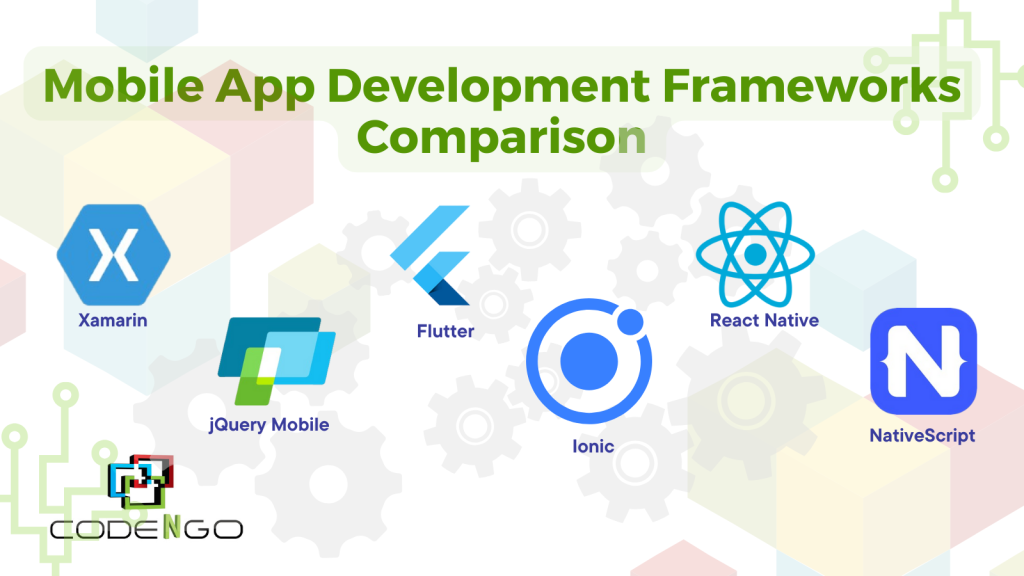Mobile app development has revolutionized the way we interact with technology, shaping our daily routines and enhancing user experiences. To embark on this transformative journey, developers have at their disposal a myriad of frameworks, each with its unique strengths and capabilities. In this exploration of mobile app development frameworks, we delve into a comparative analysis to help you navigate the ever-evolving landscape of app creation.
by Liz Rustia

Whether you’re a seasoned developer seeking the ideal framework for your next project or a newcomer eager to embark on your app development journey, this article will serve as a valuable guide to making informed choices and achieving success in the dynamic world of mobile applications.
React Native: The Cross-Platform Champion
React Native, developed by Facebook, is a popular cross-platform mobile app framework. It uses JavaScript to render native components, ensuring a near-native user experience for both iOS and Android apps, saving time and resources.
Key features include robust community support, a vast library ecosystem, and hot-reloading for real-time code updates. However, it may require custom native modules for complex device features, and performance may not match fully native apps in certain cases.
Flutter: Google’s UI Toolkit
Flutter, Google’s UI Toolkit, compiles apps for mobile, web, and desktop from one codebase using Dart. It offers customizable widgets for stunning UIs.
Its “hot reload” instantly shows code changes, enhancing development efficiency. Flutter boasts a strong community, robust documentation, and supports various plugins for backend integration.
However, it might not be ideal for apps needing deep native device integration, necessitating custom platform-specific code.
NativeScript: A True Native Experience
NativeScript offers a genuine native experience. It’s an open-source framework, allowing native app development using JavaScript or TypeScript.
Developers can directly access all native APIs, ensuring high customization and performance. It supports code sharing between iOS and Android while maintaining access to platform-specific features.
NativeScript offers pre-built UI components and plugins for complex features. However, its learning curve can be steep for newcomers to app development or JavaScript. The community and ecosystem, while growing, may not be as extensive as React Native or Flutter.
Xamarin: The Microsoft Solution
Xamarin, owned by Microsoft, is a mobile app framework that uses C# and .NET for cross-platform development.
It integrates seamlessly with Microsoft’s tools like Visual Studio, ensuring a robust development environment. Xamarin allows high code reusability and direct access to native APIs.
Xamarin.Forms, part of the ecosystem, creates cross-platform UIs from a single codebase but may lack the customization and native feel of other frameworks.
However, Xamarin app packages can be larger, and its community and library support might not match React Native or Flutter’s extensive offerings.
Ionic: The Cross-Platform Powerhouse
Ionic is a favored open-source framework for cross-platform mobile apps. It utilizes web technologies like HTML, CSS, and JavaScript, enabling interactive, attractive apps on iOS and Android. Ionic offers a vast library of pre-made UI components and a user-friendly command-line interface, simplifying app development. It’s a top choice for web developers venturing into mobile app development.
jQuery Mobile: Simplifying Mobile Web Development
jQuery Mobile simplifies mobile web development using the popular jQuery library. It provides lightweight, responsive UI components for creating mobile-friendly websites and apps. While it may not offer native functionality, jQuery Mobile ensures a consistent user experience on diverse platforms, a great choice for web developers optimizing content for mobile users.
In conclusion, the world of mobile app development offers a diverse range of frameworks, each with its unique strengths and applications. Whether you’re a seasoned developer or just venturing into the world of app creation, the choice of the right framework is critical. We’ve explored some of the top contenders, including React Native, Flutter, NativeScript, Xamarin, Ionic, The AppBuilder, and jQuery Mobile, each catering to specific needs and preferences.
Remember that your choice should align with your project’s requirements, your team’s expertise, and your long-term goals. React Native stands out for its rapid development and strong community, while Flutter excels in delivering visually appealing apps. NativeScript balances code reusability and platform-specific optimization, and Xamarin is ideal for C# and .NET enthusiasts. Ionic simplifies cross-platform development, The AppBuilder streamlines the process for businesses and individuals, and jQuery Mobile focuses on mobile web development with ease.
Whether you prioritize native performance, code reusability, or a hassle-free development experience, there’s a framework that suits your needs. Embrace the diversity of mobile app development frameworks and choose the one that empowers your vision, making your journey into app creation a rewarding one.
If you require assistance with publishing your developed app, please don’t hesitate to reach out to us. We’re here to support you throughout the app publishing process.
Share this article on